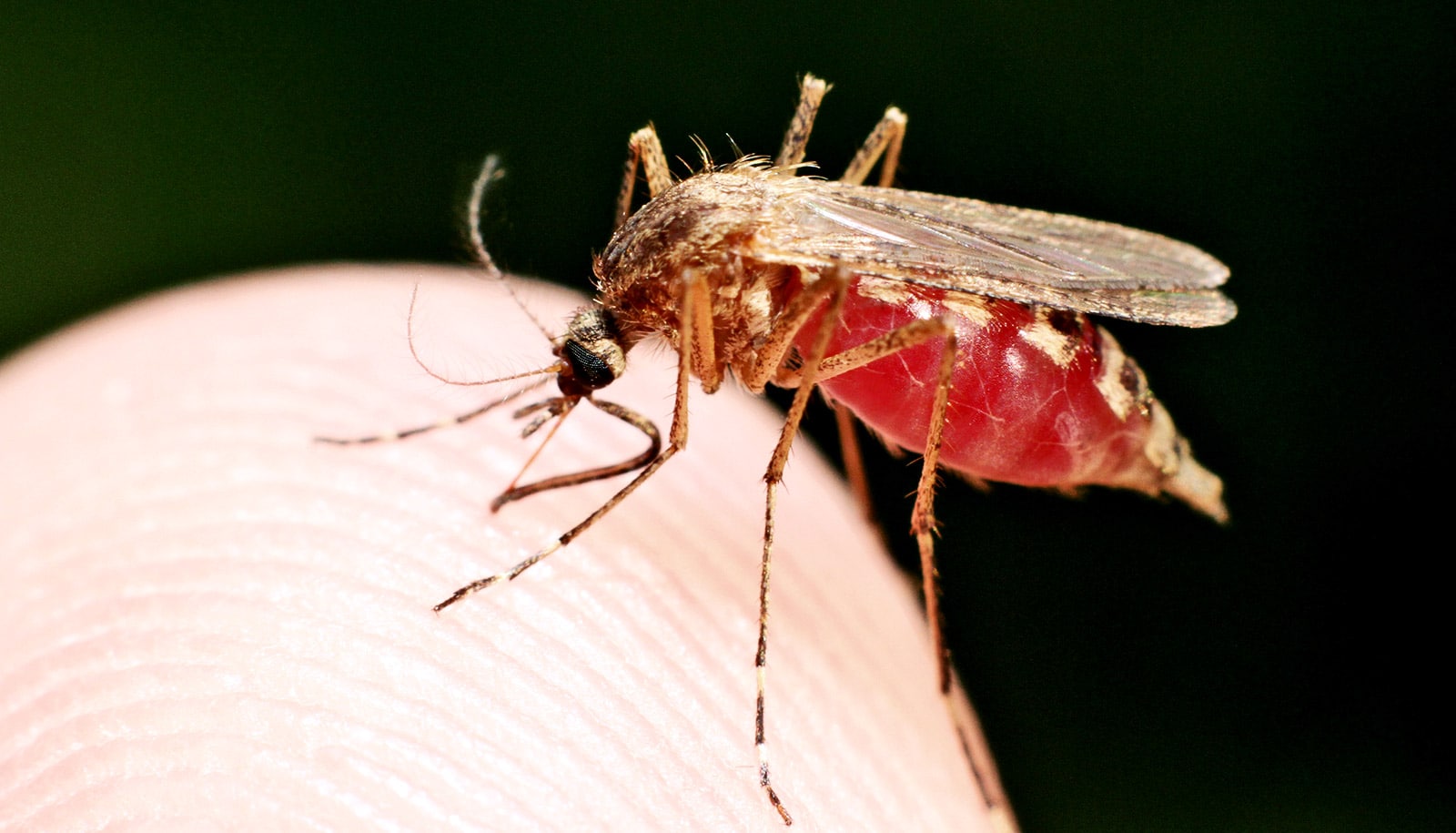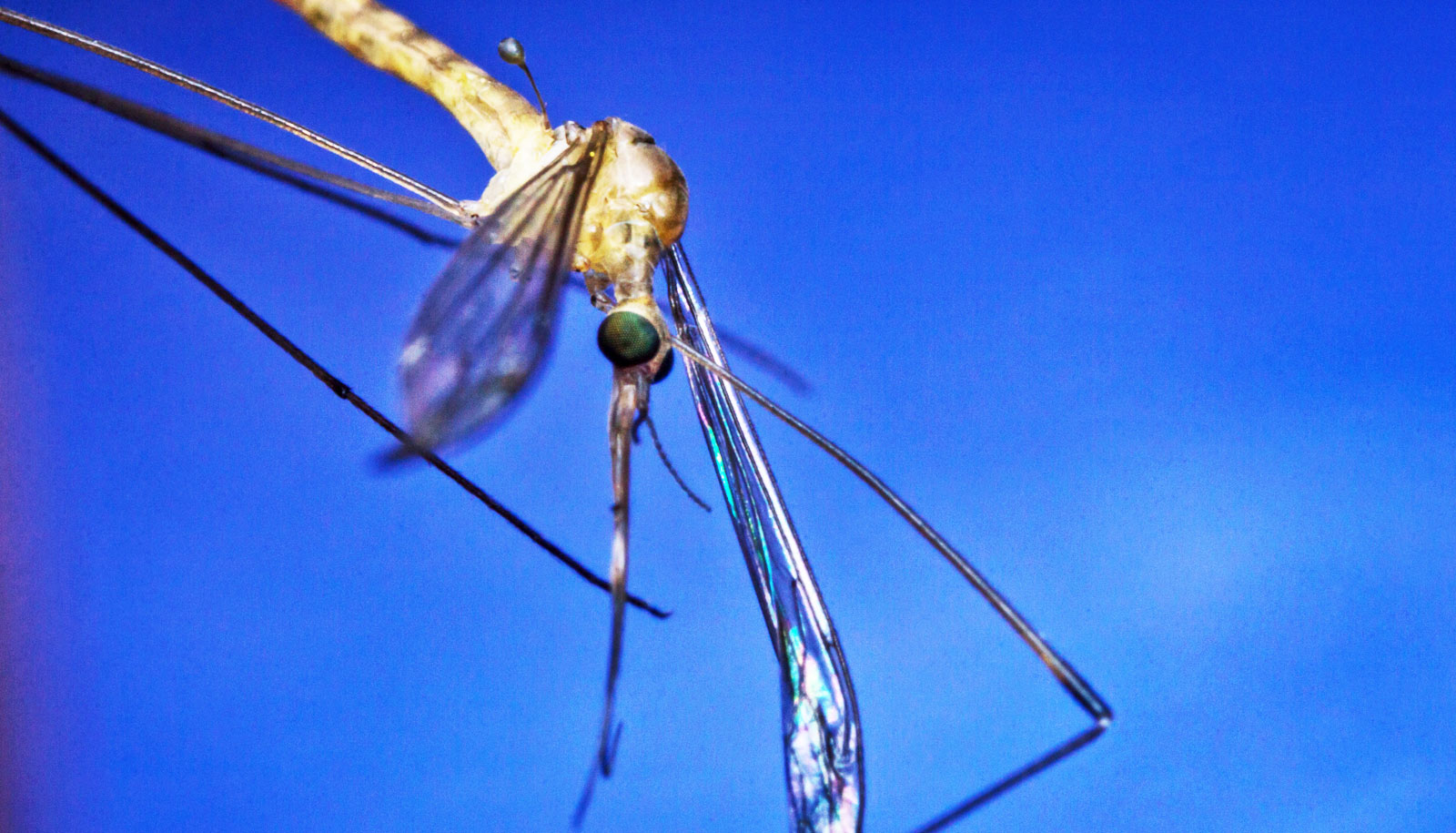Researchers have devised a simple way to boost the efficacy of a new kind of malaria vaccine.
For decades, scientists have been trying to develop a vaccine that prevents mosquitoes from spreading malaria among humans.
This unique approach—in which immunized humans transfer anti-malarial proteins to mosquitoes when bitten—is called a transmission-blocking vaccine (TBV). A few malarial TBVs have shown promise but researchers have not widely tested them due to unwanted side effects or limited effectiveness. The new research could change that.
If the new method is successful, it could help reduce the spread of the disease, which kills more than 400,000 people annually, mostly small children in sub-Saharan Africa.
“Malaria is a huge global problem. This approach—using a transmission-blocking vaccine—could be part of a suite of tools that we use to tackle the disease,” says Jonathan Lovell, associate professor of biomedical engineering at the University at Buffalo and lead author of the paper, which appears in Nature Nanotechnology.
Beyond bug nets
Utilizing TBVs to fight malaria stems, in part, from how the disease is spread. Here is how it works: a mosquito carrying the disease bites a child and transmits the malaria parasite. Later, a non-infected mosquito bites the child, and this time it’s the child who passes the parasite to the mosquito. That mosquito later bites a new victim and infects them with the parasite.
The development of effective TBVs—combined with bug nets, insecticides, anti-parasitic drugs, and others types of vaccines—could help break this vicious cycle, proponents say. While a TBV would not directly prevent an immunized person from getting infected, the vaccine would reduce the odds that people living in that community get malaria, hopefully to zero.
Prior research has focused on techniques like genetic engineering and chemical binding of toxin proteins to boost TBV responses. Each strategy has potential, but they’re also time- and resource-consuming. The new biotechnology differs in its relative ease of assembly and overall effectiveness, Lovell says.
The malaria parasite’s life cycle includes numerous stages. Different proteins represent the best vaccine target antigens, which are proteins that a vaccine mounts an immune response against. To purify these antigens for a vaccine, researchers often modify them with a small chain of amino acids called a polyhistidine-tag.
Malaria-attacking antibodies
Researchers discovered that they could mix the antigens with nanoparticles containing small amounts of cobalt-porphyrin and phospholipid, which is similar in structure to vitamin B12 and is responsible for binding the nanoparticle to the antigens.
The resulting structure is a next-generation adjuvant, which is an immunological agent that enhances the efficacy of vaccines. The vaccine works by inducing humans to make malaria-attacking antibodies, which then move to the mosquito as it bites the immunized human.
Tests involving mice and rabbits showed that antibodies from a protein called Pfs25 effectively blocked the development of malaria-causing parasites inside the gut of mosquitoes. Additional tests paired the adjuvant with multiple malaria antigens, suggesting its promise for blocking the spread of malaria at numerous stages of the disease.
The next step is to prepare additional experiments that will justify moving the technology into human trials.
Additional coauthors are from Walter Reed Army Institute of Research, the National Institutes of Health, McGill University, and the PATH Malaria Vaccine Initiative. The PATH Malaria Vaccine Initiative, the National Institutes of Health, and the intramural program of the National Institute of Allergy and Infectious Diseases supported the work.
Source: University at Buffalo



